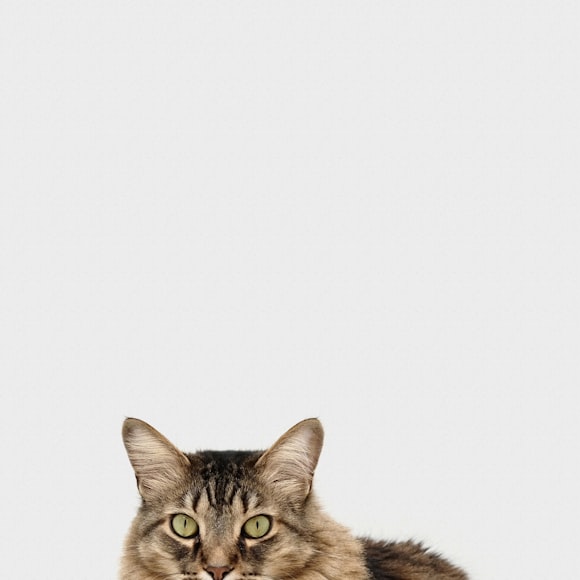How to Keep Cats Healthy in Winter

Winter can be a tough time for cats, especially outdoor cats. The cold weather can cause a number of health problems, including hypothermia, frostbite, and respiratory infections. If you have a cat, it’s important to take steps to keep them healthy and safe during the winter months.
Here are a few tips:
- Provide a warm place for your cat to sleep. This could be a bed in a warm corner of the house, a heated cat bed, or even a box lined with blankets.
- Make sure your cat has access to plenty of fresh water. Cats need to stay hydrated, especially when they’re cold. If the water in your cat’s bowl freezes, you can try warming it up slightly before giving it to your cat.
- Feed your cat a high-quality diet. Cats need more calories in the winter to stay warm. Make sure you’re feeding your cat a diet that is high in protein and fat.
- Groom your cat regularly. Brushing your cat’s fur will help to remove dead hair and keep their coat clean. This will help to keep your cat warm.
- Be aware of the signs of hypothermia and frostbite. Hypothermia occurs when a cat’s body temperature drops too low. Signs of hypothermia include shivering, lethargy, and weakness. Frostbite occurs when a cat’s skin or tissue freezes. Signs of frostbite include white or pale skin, and pain. If you think your cat may be suffering from hypothermia or frostbite, seek veterinary attention immediately.
By following these tips, you can help to keep your cat healthy and safe during the winter months.
Provide a Warm and Draft-Free Environment

As the temperatures drop and winter sets in, it’s crucial to ensure that our feline companions stay warm and healthy during these colder months. One of the most important steps in protecting your cat’s well-being is to provide a warm and draft-free environment.
Keep Cats Indoors During Cold Weather
Cats are not well-adapted to cold temperatures, and exposure to freezing weather can lead to serious health issues, such as hypothermia and frostbite. Therefore, it’s essential to keep your cat indoors during winter whenever possible. Allow them only supervised outdoor excursions when the weather permits.
Use Pet-Safe Heating Devices
If your home tends to get drafty or cold, consider using pet-safe heating devices to keep your cat warm. Here are some options to consider:
- Space heater: Place a space heater in a safe location away from your cat’s hiding places. Ensure it has a tip-over protection feature to prevent accidents.
- Heated bed: Heated beds are specifically designed for cats and emit a gentle warmth that can keep them comfortable during the night. Choose a bed with adjustable temperature settings for your cat’s preference.
- Self-heating cat houses: These outdoor shelters are insulated and have a heating system that can keep cats warm in cold weather.
Additional Tips:
- Create a cozy den: Provide your cat with a warm and draft-free place to hide and sleep. Consider using blankets, pillows, or a heated cat bed.
- Block drafts: Seal any gaps around windows and doors to prevent cold air from entering. Use draft stoppers or weatherstripping to keep the house warm.
- Monitor your cat’s temperature: If your cat feels cold to the touch or is shivering, it may be a sign of hypothermia. Seek veterinary attention immediately.
- Avoid bathing your cat too often: Bathing can remove the natural oils from your cat’s fur, which can lead to dryness and heat loss. Limit baths during winter to once a month or less.
By providing a warm and draft-free environment, you can help your cat stay healthy and comfortable during the winter months. Remember to monitor your cat’s behavior and well-being, and consult a veterinarian promptly if any health concerns arise.
Adjust Diet for Winter

As winter’s icy grip descends upon us, it’s crucial to ensure our feline friends remain healthy and comfortable during the cold season. One important aspect of winter cat care is adjusting their diet to meet their increased energy demands.
Increase Calorie Intake
During winter, cats expend more energy to stay warm and maintain their body temperature. To compensate for this increased energy expenditure, it’s essential to provide your cat with a diet that contains more calories. You can achieve this by:
- Increasing the portion size of their regular food.
- Adding extra treats or snacks throughout the day.
- Consider using a high-calorie cat food specifically formulated for the winter months.
Add Healthy Fats
In addition to increasing calorie intake, you can also consider adding healthy fats to your cat’s diet. Healthy fats provide extra energy and help your cat maintain a healthy coat and skin during the dry winter months. Some excellent sources of healthy fats include:
- Salmon oil: Rich in omega-3 fatty acids, salmon oil promotes healthy skin and coat, reduces inflammation, and supports joint health.
- Canned pumpkin: Contains soluble fiber that helps with digestion and provides a source of healthy carbohydrates. It’s also a good source of vitamin A and potassium.
How to Adjust Your Cat’s Diet
When adjusting your cat’s diet for winter, it’s crucial to do so gradually to avoid digestive upset. Start by increasing their food portion by 10-15% and observe their response. If they handle the increase well, you can gradually increase it further as needed.
If you wish to add healthy fats to their diet, start by adding a small amount (about 1/4 teaspoon for every 5 pounds of body weight) to their food daily. Again, monitor your cat closely and adjust the amount as necessary.
Remember to consult with your veterinarian before making any significant dietary changes to ensure your cat’s nutritional needs are met and any potential health concerns are addressed.
Groom Regularly

As winter’s icy grip descends upon us, it’s paramount to ensure our feline companions remain in optimal health. Regular grooming plays a crucial role in keeping cats cozy, comfortable, and free from winter-related ailments.
Brush Cats’ Fur: A Wintertime Essential
Winter may be a time for cats to curl up and hibernate, but their coats require regular attention. Brushing their fur daily or several times a week helps remove loose hair, which can prevent mats from forming. Mats can trap moisture, leading to skin irritation and even infections.
The Benefits of Brushing:
- Removes dead hair, preventing mats
- Stimulates circulation, promoting a healthy coat
- Distributes natural oils, giving cats a shiny, vibrant coat
- Removes dirt and debris, keeping cats clean and healthy
Bathe Cats As Needed
While cats are generally known for their self-cleaning habits, a bath may be necessary during the winter months to remove excess dirt and oils that can accumulate from being indoors more often. Use a mild feline shampoo designed specifically for cats’ delicate skin. Avoid over-bathing, as this can dry out their skin and coat.
Post-Bath Care:
- Wrap your cat in a warm towel after bathing to prevent hypothermia.
- Ensure they are completely dry before allowing them to roam freely.
- Consider using a hair dryer on a low setting to speed up the drying process.
Additional Grooming Tips:
- Trim your cat’s nails regularly to prevent overgrowth and discomfort.
- Check their ears and eyes for signs of irritation or infection.
- Provide a cozy bed or blanket for your cat to snuggle up in during cold nights.
By following these grooming tips, you can help keep your cat healthy and comfortable during the winter months. Regular grooming not only promotes their physical well-being but also strengthens the bond between you and your feline friend.
Check for Winter-Related Health Conditions

As temperatures drop and the winter season sets in, it’s crucial to be mindful of the potential health risks that cats can face during this time. Here are some winter-related health conditions to watch out for:
Hypothermia
Hypothermia occurs when a cat’s body temperature drops to dangerously low levels. Symptoms include shivering, lethargy, slow breathing, and pale or blue gums. If you suspect your cat is experiencing hypothermia, seek immediate veterinary care.
Frostbite
Frostbite is a condition where the skin and tissue of a cat’s extremities, such as their ears, tail, and paws, become frozen. Symptoms include discoloration, swelling, and pain. If you notice any of these signs, contact a veterinarian right away.
Respiratory Infections
The cold and dry winter air can irritate a cat’s respiratory system, making them more susceptible to infections. Symptoms of respiratory infections include coughing, sneezing, discharge from the nose or eyes, and difficulty breathing. If your cat exhibits any of these symptoms, consult a veterinarian promptly.
Monitor for Symptoms
It’s important to regularly monitor your cat for any signs of these winter-related health conditions. If you notice any unusual behavior or symptoms, such as shivering, lethargy, discharge from the nose or eyes, or difficulty breathing, contact a veterinarian immediately. Early detection and treatment can significantly improve your cat’s chances of recovery.
Veterinary Care
If you suspect your cat is suffering from any winter-related health condition, it’s essential to contact a veterinarian as soon as possible. A veterinarian will be able to diagnose the condition, provide appropriate treatment, and give you instructions on how to care for your cat during this time.
Provide Plenty of Fluids
As temperatures drop and winter sets in, it’s essential to ensure your feline companions stay healthy and comfortable. Providing ample fluids is a crucial aspect of winter cat care.
Why Cats Need More Fluids in Winter
During cold weather, cats naturally drink less water. This is because they instinctively conserve body heat by reducing their water intake. However, dehydration can have serious health consequences, such as urinary tract infections and constipation.
Encouraging Cats to Drink More Water
To prevent dehydration, encourage your cats to drink more water. Here are some tips:
- Place multiple water bowls in different locations around your home, making it easily accessible for them.
- Consider using a heated water bowl to entice cats to drink more.
- Add a few drops of tuna juice or unsalted chicken broth to their water for added flavor.
- Provide ice cubes as an alternative way for cats to hydrate.
Using a Heated Water Bowl
Heated water bowls can be a helpful tool for encouraging cats to drink more water in winter. These bowls maintain a slightly elevated water temperature, making it more appealing to cats and reducing their instinct to conserve body heat.
Benefits of Ample Fluids
Providing plenty of fluids helps keep cats:
- Hydrated, preventing dehydration-related health issues
- Flushing toxins out of their bodies
- Maintaining a healthy urinary tract
- Promoting good digestion by preventing constipation
- Regulating body temperature by aiding in heat dissipation
Conclusion
Ensuring that your cats have access to ample fluids is essential for their health and well-being during the winter months. By following these tips, you can help keep your feline companions hydrated and avoid potential health problems. Remember to consult with your veterinarian for any specific concerns or recommendations regarding your cat’s fluid intake.
Keep Litter Boxes Clean and Warm
Winter weather can pose unique challenges for our feline companions. One essential aspect of keeping cats healthy during this season is maintaining clean and warm litter boxes.
Scoop Litter Boxes Frequently
As temperatures drop, litter boxes can become cold and uncomfortable for cats. Frozen litter can deter them from using the box, leading to accidents and potential health issues. To prevent freezing, it’s crucial to scoop litter boxes frequently, at least twice a day.
Consider Placing Litter Boxes in a Warmer Location
If possible, relocate litter boxes to a warmer area in your home. This could be in a corner of a heated room, a basement, or even a heated pet bed. Ensure that the location is private and easily accessible for your cat.
Additional Tips
- Use a heated litter box: These devices provide a warm, cozy space for cats, especially in drafty areas.
- Add a soft blanket or towel: Place a blanket or towel over the litter box to provide an insulating layer and make it more inviting for your cat.
- Consider a self-cleaning litter box: These boxes automatically scoop out waste, reducing the frequency of cleaning required.
By following these tips, you can ensure that your cat’s litter box remains clean, warm, and comfortable during the winter months. This will help prevent accidents, maintain your cat’s health, and give them a safe and convenient place to do their business.
Provide Outdoor Shelters for Feral Cats
As the winter chill sets in, it’s crucial to ensure the well-being of our feline friends, especially those living outdoors. Feral cats face numerous challenges during this season, including exposure to cold, wet weather and a shortage of food. One effective way to protect these cats is by providing them with warm and dry shelters.
Building Insulated Shelters
Creating insulated shelters is a relatively simple and inexpensive way to protect outdoor cats from the elements. Here are some steps to follow:
- Choose a suitable location: Select a protected area, away from windy spots and potential hazards.
- Gather materials: You will need a large plastic storage bin with a lid, straw or blankets, and insulation material (e.g., foam boards or bubble wrap).
- Insulate the bin: Line the inside of the bin with a layer of insulation material.
Monitoring and Maintaining
Once you have constructed the shelters, it’s essential to monitor them regularly. Remove any icy or wet bedding and replenish it with fresh straw or blankets. Keep the shelters clean and dry to prevent health issues for the cats.
Additional Tips for Providing Outdoor Shelters
- Consider multiple shelters: Provide several shelters in different locations to give cats options and prevent overcrowding.
- Keep shelters elevated: Place shelters off the ground to protect them from moisture and cold air.
- Provide food and water: Place food and water stations near the shelters, ensuring they are kept thawed or warm.
- Monitor cats regularly: Observe the cats using the shelters and check for any signs of distress or illness.
Benefits of Providing Outdoor Shelters
Providing outdoor shelters for feral cats offers numerous benefits:
- Warmth: Shelters provide a warm and dry place for cats to retreat and escape the cold.
- Protection: Shelters protect cats from wind, rain, and snow.
- Reduced stress: Having a safe and comfortable shelter can reduce stress levels in cats.
- Improved health: Shelters help prevent hypothermia and other winter-related illnesses.
By providing insulated outdoor shelters, we can help feral cats survive the harsh winter months and improve their overall health and well-being.
Consider Winter Clothing for Short-Haired Cats
As the winter chill sets in, it’s crucial to safeguard our feline companions from the frigid temperatures. Short-haired cats, in particular, are more prone to cold stress due to their lack of insulation. To ensure their well-being during the cold months, consider providing them with winter clothing.
Why Winter Clothing is Essential for Short-Haired Cats
Short-haired cats possess a limited amount of fur compared to their long-haired counterparts. This makes them less effective at trapping heat and protecting their bodies from the cold. When exposed to extreme temperatures, they may shiver, become lethargic, and experience hypothermia.
Choosing the Right Winter Clothing
When selecting winter clothing for your short-haired cat, prioritize comfort and warmth. Look for sweaters or coats made of breathable materials, such as fleece, cotton, or wool. Avoid tight-fitting garments that can restrict movement.
Fit and Measurements
To ensure a perfect fit, measure your cat’s chest and neck circumference before purchasing clothing. The sweater or coat should fit snugly but not too tightly. Make sure it covers the cat’s torso and extends slightly over the tail to provide additional warmth.
Introducing Winter Clothing
Introduce winter clothing to your cat gradually. Start by letting them wear it for short periods and supervise them to ensure they are comfortable. Over time, they will become accustomed to the extra layer of warmth.
Additional Tips for Keeping Cats Warm in Winter
In addition to providing winter clothing, there are other steps you can take to keep your short-haired cat healthy and warm during the winter:
- Provide a warm bed with soft blankets for them to nest in.
- Place a heated pet bed or heating pad in their favorite spot.
- Keep your house at a comfortable temperature, between 68-74°F.
- Limit their outdoor exposure, especially during extreme cold weather.
- Provide plenty of fresh water, as cats may become dehydrated in cold temperatures.
By providing your short-haired cat with winter clothing and implementing these additional measures, you can help ensure their comfort and well-being throughout the cold winter months.
Protect from Ice and Snow
As the winter season blankets the world in a pristine coat of ice and snow, it’s essential to take extra precautions to ensure the well-being of our feline companions. These icy conditions can pose significant risks to cats, and it’s our responsibility as pet owners to keep them safe and healthy.
Paw Protection with Wax or Boots
One of the most vulnerable areas for cats in winter is their paws. The cold and icy surfaces can cause dryness, irritation, and even frostbite. To protect your cat’s paws, consider using paw wax or boots.
- Paw Wax: Apply a thin layer of paw wax to your cat’s paws before going outside. This wax creates a barrier between the skin and the cold, preventing moisture loss and frostbite.
- Boots: Cat boots provide additional protection by covering the entire paw. They are particularly useful for cats that spend extended periods outdoors. Choose boots made of waterproof and breathable material to keep your cat’s paws warm and dry.
Maintain Clear Sidewalks and Driveways
Another potential hazard for cats in winter is slippery surfaces. Ice and snow on sidewalks and driveways can increase the risk of falls and accidents. To prevent injuries, make sure to keep these areas clear of ice and snow.
- Shoveling and De-icing: Regularly shovel snow from sidewalks and driveways. Use pet-friendly de-icing products to melt ice without harming your cat’s paws.
- Salt Alternatives: Avoid using salt for de-icing, as it can irritate your cat’s paws and skin. Instead, opt for pet-friendly alternatives such as calcium chloride or sand.
By following these simple measures, you can help protect your cat from the harsh effects of winter. Ensuring your feline companion’s paws are protected from ice and snow and providing a safe environment for them to move around will go a long way in keeping them healthy and happy throughout the coldest months of the year.

















